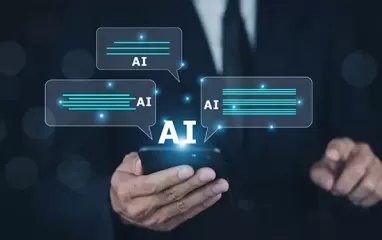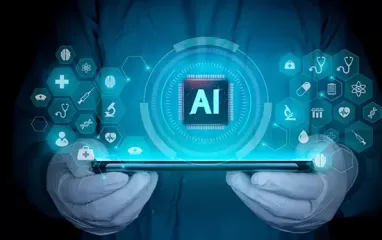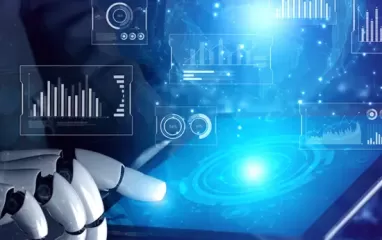Other recent blogs



Let's talk
Reach out, we'd love to hear from you!
In the past, when systems were not so complex, identifying problem areas in system performance and fixing them was a relatively straightforward journey for companies. But as technology advances to match the current tech landscape, these systems have become more intricate. The result—the task of observability and troubleshooting system performance has become increasingly challenging for companies, which was earlier a linear process.
Fast forward to today's times in 2024. New-age companies are now turning to Artificial Intelligence (AI) and LLMs, more particularly Generative AI (GenAI) for observability purposes. GenAI has promising data visualizations benefits when applied to observe system behavior and performance trends.
But what is the role of Generative AI in observability? How will integrating Generative AI observability reduce downtime and improve system reliability of IT environments? Well, it brings predictive problem-solving capabilities to the table. Using Artificial Intelligence observability, companies can gain a practical understanding of potential system issues before they trigger. Traditional monitoring and analysis methods needed to be more sufficient to provide usable insights.
Moreover, the result of AI observability helps optimize performance in complex systems. It enables companies to analyze specific trends and patterns in observability data much earlier. correctness, reliability, and effectiveness are the key benefits of using Generative AI to transform observability. Also, it makes the journey of dealing with the complexities of modern systems relatively smooth by allowing organizations to make data-driven decisions.
What is AI Observability?
At its simplest, AI Observability is a business' capability to comprehend and analyze insights curated from external sources and apply the understanding gained to preempt a distributed complex systems or application’s behavior. To proactively identify and resolve system performance issues before anyone notices them, software engineers and data specialists apply Observability as a proactive approach and optimize their distributed systems and applications using the datasets generated.
When used with LLMs like Generative AI, observability helps companies measure the software system's internal condition and execute significant improvements underpinned at actionable intelligence. It also helps to understand how well systems work in dynamic and interconnected environments while visualizing overall system status, performance metrics, and logs.
During the process, LLM observability focuses on uncovering unforeseen issues and unknown failures missed in maintaining any IT system or software. Outpacing traditional monitoring capabilities, this comprehensive approach also helps organizations determine the root cause of these occurrences and optimize their ability to process vast amounts of information accurately.
Going hand in hand with root-cause exploration, observability further leverages powerful Machine Learning (ML) algorithms to streamline the process of identifying patterns, anomalies, and correlations within datasets that might be invisible to traditional monitoring tools. All this significantly helps enhance the intelligent Observability quotient with real-time responses to dynamic system changes.
Generative AI also brings automation to the forefront, allowing organizations to automate the identification of issues, analyze their impact, and even suggest or implement corrective actions autonomously. This not only reduces the time required for issue resolution but also minimizes the potential for human error.
Intelligent AI Observability wouldn’t be possible without monitoring: Exploring differential aspects
Observability and monitoring are closely related. However, they serve different purposes in software engineering and system operations (DevOps) landscapes. For many, Observability and monitoring are two prerequisites that offset the system’s complexity and benefit data operations teams in their day-to-day tasks. Let’s understand the differential aspects between Observability vs monitoring regarding application performance monitoring (APM) and explore how they support software development and operations (DevOps) goals.
Monitoring is observing and measuring the operational status of a system, application, or infrastructure. Often acknowledged as a DevOps monitoring journey, it helps software development IT teams detect and solve issues related to these systems' performance, health, and behavior. Under this process, data engineers leverage different monitoring tools to gather metrics, logs, and other data points. They analyze complex datasets and expose unidentified issues. This step is essential to understanding the logs showing the system's current state and alerting the team about every deviation from expected behavior or performance limits.
Monitoring has different components. Let’s explore each component further:
Data Types:
- Metrics are numbers that measure different aspects of a system's operational state and performance. They show how well the system is doing and track CPU usage, memory usage, disk use, network speed, and response time.
- Logs are pivotal in capturing textual records of events and activities within an IT system infrastructure. They contain valuable datasets on system behavior, errors, warnings, and user interactions. Aggregation and careful analysis of logs help detect patterns, anomalies, and performance issues that, if left unattended, can severely impact system reliability and performance.
- Traces are a detailed view of the flow of individual requests or transactions as they traverse through different components of a distributed system. Trace datasets are essential to gain a better understanding of the end-to-end latency, identify bottlenecks, and troubleshoot performance issues across complex architectures.
- Events reflect occurrences or changes triggered within a system. They include changes related to deployments, configurations, or infrastructure updates.
Monitoring Components:
- Data collection agents reside on individual servers, containers, or services. They are responsible for collecting metrics, logs, traces, and event datasets from the underlying systems and applications.
- Data storage and aggregation are important steps in the entire journey of reshaping Observability and improving system performance. Monitoring systems are programmed to store the collected data in databases or time-series databases. This data is utilized for analysis and visualization after the datasets are preprocessed, and companies use the data to facilitate efficient querying and analysis.
- Alerting and notification are the major benefits of using monitoring tools in sync with Observability platforms. Powered by alerting mechanisms, the duo helps stakeholders detect predefined thresholds, anomalies, or critical events early. As a result of alerts, the respective teams are able to proactively respond to issues and prevent service disruptions on time.
- Visualization and analysis in monitoring dashboards and visualization tools are absolute game-changers in reflecting the collected data in a comprehensible format using graphs, charts, and heatmaps. Analysis features enable data engineer teams to explore trends, correlations, and anomalies within the data. This in turn acts as a critical bridge, making observability datasets more understandable and actionable.
Four Golden Signals:
- Latency measures the time it takes for a system to respond to a request or execute an operation. Monitoring latency helps identify performance bottlenecks, optimize resource utilization, and ensure responsive user experiences.
- Traffic: Traffic metrics track the volume of requests or transactions processed by a system over time. Monitoring traffic helps teams understand usage patterns, forecast capacity requirements, and detect sudden spikes or drops in demand.
- Errors: Error rates indicate the frequency of failed or erroneous requests encountered by a system. Monitoring errors helps identify bugs, infrastructure issues, or external dependencies causing failures, enabling timely resolution and improving system reliability.
- Saturation: Saturation measures the utilization of critical system resources, such as CPU, memory, disk, or network bandwidth. Monitoring saturation levels helps anticipate resource exhaustion, prevent performance degradation, and scale infrastructure proactively.

Monitoring enables intelligent observability when powered by Generative AI. On the other hand, Generative AI observability involves tracking factors such as data distribution, model loss, convergence patterns, and the quality of generated outputs. By having a comprehensive view of these aspects, stakeholders can make informed decisions, implement improvements, and ensure the model aligns with its intended objectives.
So why is monitoring essential for intelligent AI Observability?
Monitoring and observability deliver the best outcomes when they work in synergy. When monitoring is applied alone in the software development and operations lifecycle, it becomes near impossible for data engineers to identify performance issues in IT infrastructure and isolate the different complex IT applications where errors are triggered first.
Also, the synergy of monitoring and observability helps enhance the visibility quotient by laying the firm foundation of correct datasets that are necessary to diagnose the behavior of complex systems. What’s more? The duo enhances the overall application performance management lifecycle by capturing various data types, monitoring components, and focusing on key metrics. This way, companies get a bird-eye view of the “what” is the current state of an IT environment.
What are the pillars of Generative AI Observability?
Artificial intelligence observability relies on four key pillars: metrics, logs, metadata, and lineage. These pillars provide a detailed framework that data engineers leverage to better understand, monitor, and manage complex systems. Let's examine each of these observability pillars in depth to gain a better understanding.
Metrics:
Metrics are quantitative measurements. They provide insights into how a system performs and behaves. These can include key performance indicators (KPIs) such as response times, error rates, and resource use. Using the metrics, one can get a high-level view of system health and performance. The metrics are also beneficial to quickly see trends, anomalies, or potential issues.
Logs:
Logs are detailed records of events and activities within a system, showcasing how and when things happened. They provide a chronological and granular view of what has occurred, offering valuable context during troubleshooting and debugging. With Logs, one can capture a wide range of information, including error messages, user interactions, and system events. Companies analyze logs to find the root causes of issues and understand the sequence of events leading to a state.
Metadata:
Metadata refers to extra information. It gives context and understanding to metrics and logs. Metadata includes details about the environment, configuration, and relationships between components. Also, it bridges the gap between raw data and insights, providing a deeper view of the system's context. Usually, metadata provide detailed information on software versions, dependencies or configurations, which play a crucial role in influencing system behavior.
Lineage:
Lineage involves tracing the data flow via a system and creates a connections between different components. It clarifies how data changes as it moves through the system. This is especially true in complex environments, where data undergoes many changes or passes through various stages. Companies tracking lineage are able to identify bottlenecks early. This results in improving data integrity, and the overall efficiency of a system.
These four pillars create strong observability. They give a full view of a system's inner workings. Here's how these pillars work in concert:

How Generative AI is reshaping Observability platforms?
Many new-age companies are now leveraging intelligent Generative AI observability systems to gain better understanding of complex patterns, anomalies, and potential issues within the AI-driven infrastructure. Such platforms play a crucial role in improvising system diagnostics journeys and enhance predictive capabilities as a result of proactive problem-solving abilities.
A key challenge in observability is finding the root cause of issues. Generative AI can analyze vast datasets. It can uncover intricate relationships and dependencies. This enhances root cause analysis within the system and speeds up troubleshooting. It also lets organizations address issues before they get worse.
Generative AI changes observability solutions. It adds a new dimension of adaptability, creativity, and efficiency. The integration of Generative AI into observability practices is revolutionizing how we monitor, understand, and manage complex systems. Here's a detailed exploration of how Generative AI reshapes observability solutions:
- Enhanced understanding through Data Synthesis:
Generative AI excels in data synthesis, which is best acknowledged for creating realistic and diverse datasets. Observability leverages this capability to generate synthetic data for testing and training models. It also allows observability solutions to simulate many scenarios and ensures rigorous testing and strong model training. - Anomaly detection and pattern recognition:
Generative AI models are adept at recognizing patterns and anomalies within data. In observability, this translates to improved anomaly detection. Generative models can learn normal behavior. They can quickly find deviations. This makes observability solutions more proactive. They flag potential issues or irregularities.
Generative AI models excel at understanding data patterns and distributions. They are based on generative adversarial networks (GANs) or variational autoencoders (VAEs). They are trained on vast datasets of normal system behavior. The models learn the complex patterns in the data. They can use this understanding. They can spot anomalies by comparing new data to the learned normal behavior.
This ability to detect subtle deviations from the expected patterns enables generative models to proactively flag potential issues or irregularities in observability solutions. Unlike traditional methods that rely on predefined thresholds, generative models adapt to dynamic environments, continuously updating their understanding of normal behavior to maintain effective anomaly detection capabilities. By harnessing the power of generative AI for anomaly detection, organizations can achieve greater proactive monitoring, early issue detection, and enhanced system reliability.
- Dynamic adaptability to system changes:
Observability solutions often struggle to adapt to dynamic changes in system behavior. Generative AI introduces adaptability. It does this by learning and updating models based on evolving data. This changeable nature ensures that observability stays effective. It stays effective in the face of changing system conditions. - Predictive insights for proactive observability:
Generative AI enables observability solutions to move beyond reactive monitoring to proactive prediction. By understanding history and making predictions, observability can foresee issues before they happen. This allows for preventive actions and reduces downtime - Creative problem-solving in observability:
The creative nature of Generative AI extends to problem-solving in observability. When faced with complex problems or data challenges, generative models can propose new solutions. They can also make fake data to help with troubleshooting and debugging.. - Improving explainability and interpretability:
AI models are becoming more interpretable helping companies demystify complex AI decisions. As a result, they make LLM observability easier to understand and provide clear insights into how models reach conclusions. Enhanced trust and better understanding among users are the outcomes. - Customization for diverse use cases:
Observability requirements vary across industries and systems. Generative AI allows for customization based on specific use cases. Whether monitoring healthcare systems, financial transactions, or manufacturing processes, observability solutions can be tailored to the unique characteristics of each scenario. - Optimizing resource utilization:
Generative AI contributes to observability by optimizing resource utilization. Observability solutions can better allocate resources through advanced algorithms and learning mechanisms, enhancing system performance and efficiency. - Real-Time analysis and adaptation:
Generative AI facilitates real-time data analysis, enabling observability solutions to adapt quickly to changing conditions. This capability is crucial for industries that require immediate responses to anomalies or critical events, such as cybersecurity or autonomous systems.
Navigate performance bottlenecks with intelligent Generative AI Observability solutions.
Let's talkThe final thoughts:
Generative AI observability has an important role to play in improving system performance by bringing ethical considerations to the forefront. Applying responsible AI practices become integral to observability solutions as they ensure that generative models align with ethical standards and avoid biases or unintended consequences.
Interestingly, at Kellton our experts deliver end-to-end intelligent Generative AI observability solutions that are engineered particularly to deliver greater intelligence, adaptability, and creativity. Our solutions facilitate seamless synergy unlocking new possibilities for effective monitoring at the intersection of predictive insights, data synthesis, and dynamic adaptation to changes in complex systems.
We strongly believe Technology is advancing and Generative AI's impact on observability will likely redefine how we ensure AI-driven applications' reliability and performance.



